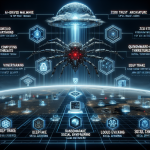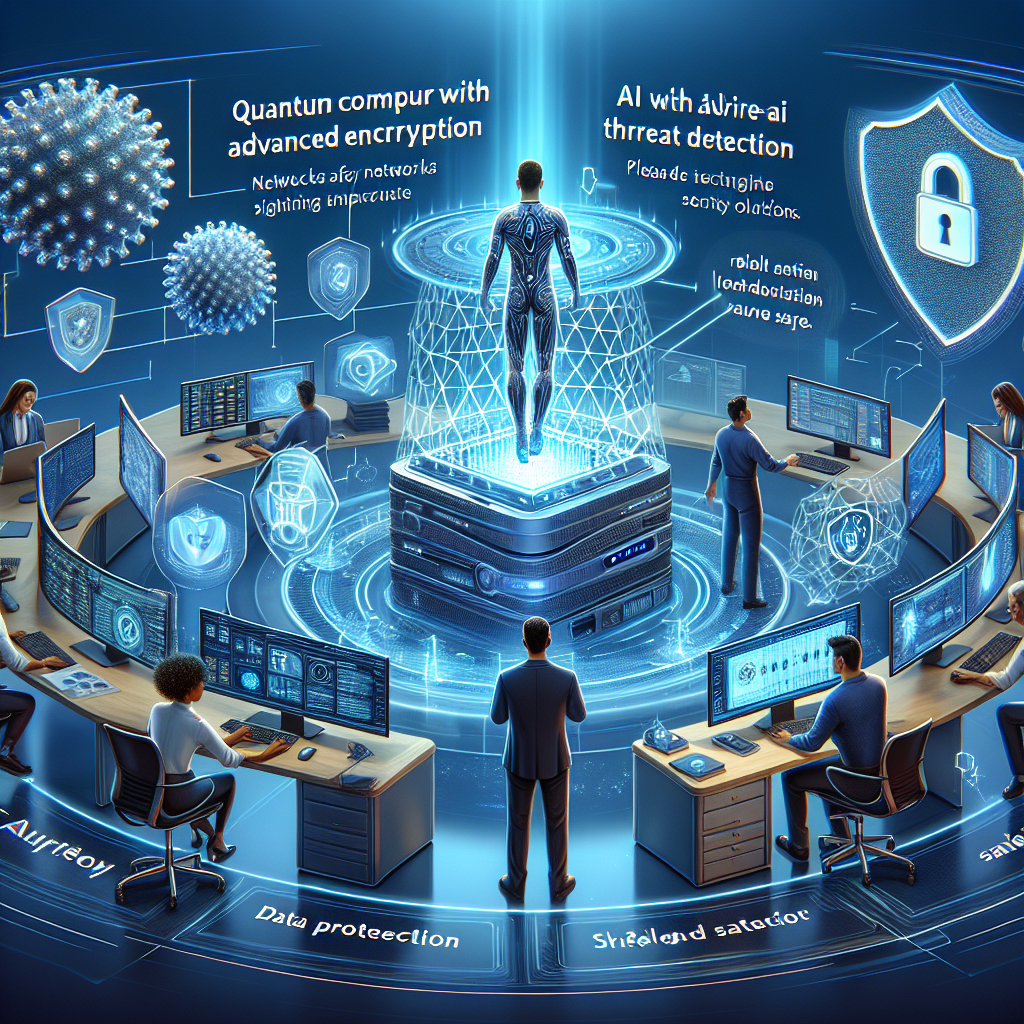# Cybersecurity 2024: Key Trends and Best Practices to Protect Your Data
## Introduction
Welcome to the future where even your refrigerator might have a better password than some people! Yes, folks, we’re diving into the exciting world of cybersecurity in 2025. It’s super important to keep up with the latest trends because those sneaky cyber threats are getting smarter. But don’t worry! We’re here to help you understand the key trends and best practices to keep your data safe. Ready to protect your digital world? Let’s dive in!
## Section 1: Key Cybersecurity Trends of 2025
### 1.1 Rise of Artificial Intelligence in Cybersecurity
Imagine this: AI, our trusty robot friend, is being used more than ever to find and stop cyber threats. It can quickly spot sneaky malware, but it also comes with its own set of challenges, like ethical questions and depending too much on it.
**Pros of AI Integration:**
– Finds threats quickly.
– Automates routine security tasks.
– Learns from every incident.
**Cons of AI Integration:**
– Being too dependent can cause vulnerabilities.
– Might have biased decision-making.
– AI systems could become targets themselves.
### 1.2 Increasing Use of Zero Trust Architecture
Meet Zero Trust Architecture, or as I like to call it, the “Trust No One” policy. This means everyone, whether inside or outside your network, needs to be verified all the time.
**Benefits:**
1. Reduces potential attack areas.
2. Shows activity across the network.
3. Limits threats from moving around.
**Challenges:**
1. Hard to set up.
2. Expensive at first.
3. Could slow down performance.
### 1.3 Growing Importance of Cyber Hygiene
Remember how your mom told you to wash your hands? Cyber hygiene is like that for your data, keeping it clean and safe.
**Common Practices:**
– Change passwords often.
– Use antivirus and anti-malware software.
– Check and audit systems regularly.
### 1.4 Enhanced Focus on IoT Security
No, your toaster won’t hack your router on our watch! The Internet of Things (IoT) offers convenience but can also be a playground for hackers.
**Strategies for Securing IoT:**
1. Strong device authentication.
2. Regular updates for firmware.
3. Separate networks for IoT devices.
### 1.5 Surge in Cloud Security Measures
Clouds don’t just look nice—they’re big data centers. Keeping them secure is crucial.
**Cloud Security Best Practices:**
– Encrypt data in transit and at rest.
– Do regular security checks.
– Use strong identity and access management (IAM) policies.
## Section 2: Notable Cyber Threats of 2025
### 2.1 Sophisticated Phishing Attacks
Phishing has come a long way from those “Nigerian Prince” emails. Now, they’re tricks that look really real!
**Tips to Recognize and Prevent:**
1. Watch out for weird grammar and links in emails.
2. Don’t open attachments from strangers.
3. Use advanced email filters.
### 2.2 Ransomware as a Primary Threat
Ransomware is like bullies taking your lunch money, but from your files. It’s serious business.
**Safeguarding Methods:**
– Back up data regularly and securely.
– Use anti-ransomware tools and learn about them.
– Keep software and operating systems updated.
### 2.3 Supply Chain Attacks
Even if your network is safe, intruders might sneak in through third-party connections like ninjas.
**Preventive Measures:**
– Thoroughly check third-party vendors.
– Use supply chain security protocols.
– Regularly audit and watch partner activities.
### 2.4 Social Engineering Exploits
Humans love to click buttons, and hackers use that to their advantage.
**Mitigation Strategy:**
1. Do frequent cybersecurity training.
2. Run simulations to boost awareness.
3. Encourage employees to question suspicious things.
## Section 3: Best Practices for Data Protection
### 3.1 Multi-Factor Authentication
Think of MFA as having a key, a secret handshake, and a guard dog—the ultimate protection.
**Implementation Methods:**
– Use SMS verification.
– Use authenticator apps.
– Use biometric verification.
### 3.2 Regular Software Updates and Patch Management
Updates aren’t just annoying pop-ups; they actually protect you from vulnerabilities.
**Efficient Patch Management Strategies:**
– Use automated patch solutions.
– Check for vulnerabilities regularly.
– Prioritize critical patches.
### 3.3 Secure Backup and Recovery Plans
Backup plans mean you never have to worry about losing your data forever.
**Steps for a Reliable Recovery Plan:**
1. Schedule backups regularly.
2. Store backup data off-site.
3. Test recovery processes frequently.
### 3.4 Encryption of Sensitive Data
Make sure only you can access your data, like a digital secret diary.
**Tools for Encryption:**
– Full Disk Encryption (FDE).
– End-to-End Encryption (E2EE) for messaging.
– Encrypting File System (EFS) for Windows.
### 3.5 Employee Training and Awareness
Make sure your staff doesn’t drop the ball when it comes to security.
**Training Program Development:**
– Keep training modules updated.
– Have interactive learning sessions.
– Train with scenarios mimicking real life.
### 3.6 Implementing Cybersecurity Frameworks
Frameworks guide you through Cyberland, keeping your security strong.
**Popular Frameworks:**
1. NIST Cybersecurity Framework.
2. ISO/IEC 27001.
3. Cybersecurity Maturity Model Certification (CMMC).
## Section 4: Future Outlook
The future is where quantum computing might surprise us all, but don’t worry, smart folks are working on it! Working together internationally and continuing innovation are key. Cybersecurity tech will keep evolving with a good sense of humor to outsmart threats.
## Conclusion
We’ve traveled through AI detectives, Zero Trust fortresses, phishing tricks, and ransomware threats. By knowing these best practices, you can protect yourself from digital trouble in 2024 and beyond. Being proactive isn’t just smart—it’s necessary.
## Call to Action
Ready to shield your digital life? Review your cybersecurity strategy, sign up for cybersecurity newsletters, and share your thoughts and experiences in the comments. Let’s outsmart cyber villains, one byte at a time!











